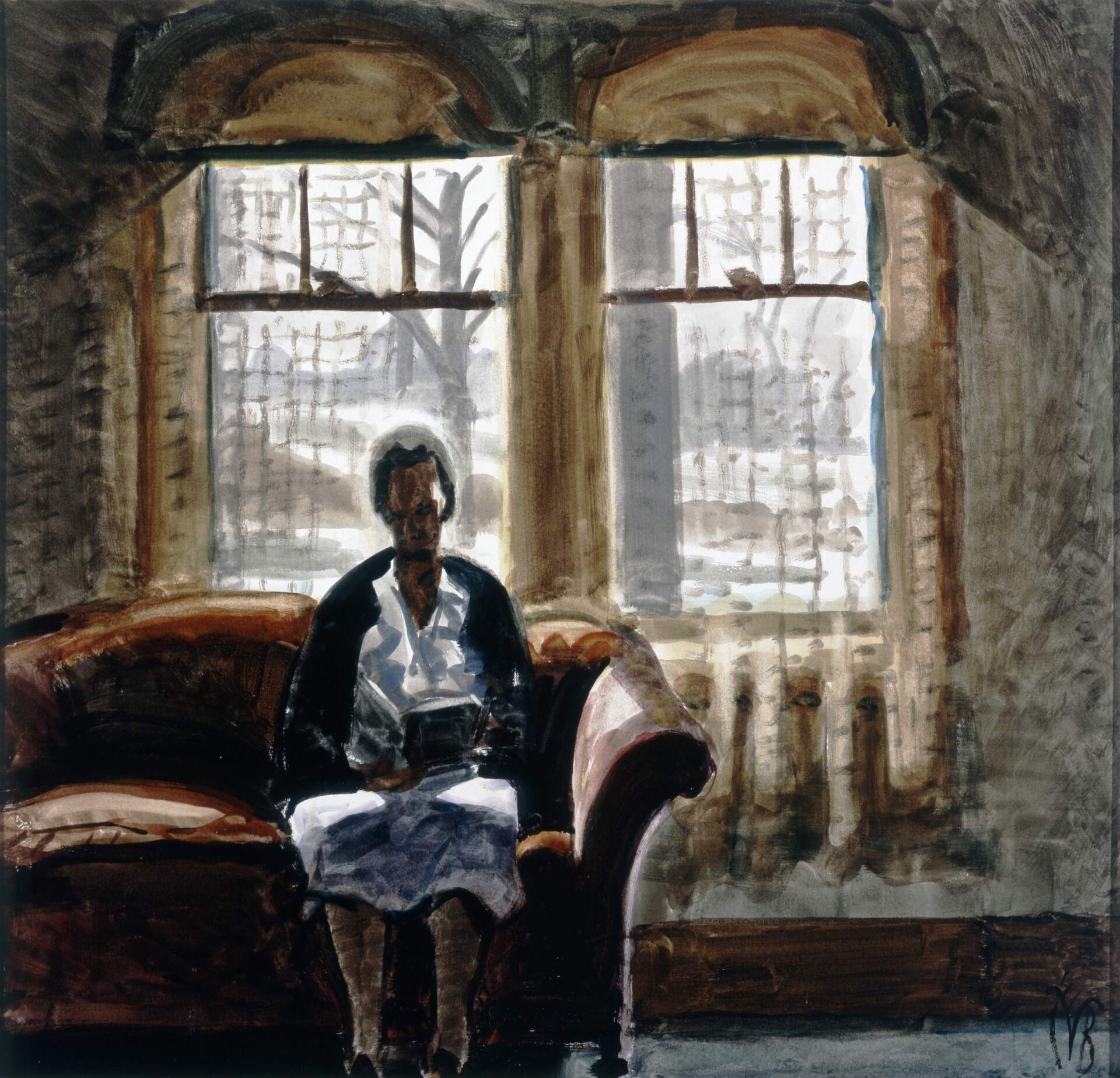Charles E. Burchfield (1893-1967)Bertha on the Davenport
1937
watercolor on paper
21 3/4 x 23 inches
Burchfield Penney Art Center, Purchased with funds from the Margret L. Wendt Foundation, Retired Alumni Association Inc., and Friends of the Center 1980
Charles Burchfield first met Bertha Kenreich on December 3, 1917 when his mother and sisters invited her to dinner. The evening was less than perfect for the shy young man. He said, “It was a rather painful affair – Both Jim & I were bashful, so whatever conversation there was had to be supplied by Mother and “the girls” – Once they had to go to the kitchen, leaving us men alone with her – The silence that prevailed then can only be described as strong –” After service in the U.S. Army in the last months of World War I, he briefly worked on her father’s farm and she soon captured heart. On June 9, 1921 Charles wrote:
How different the world is after a man has found a woman about whom he can construct a plan of his future — A few weeks ago I wandered afield terrified by my loneliness in nature - the hills and trees and skies seemed alien - even hostile - to me, and I fled from them to get back to town where I could see and talk with people, which in turn was unsatisfactory. Now the whole earth is smiling at me; the sights and sounds of June never seemed so full of meaning; I can sit endlessly on hillsides and dream hour after hour, and not care when I get home -
And she has been there all this time and I never realized!
They married in her hometown of Greenford, Ohio on May 20, 1922 and immediately moved to Buffalo, New York, where Charles had started working at the M. H. Birge & Sons Company. By November they knew they were expecting their first child. In his thoughts, Charles bubbled over with enthusiasm:
How much fuller the life of the man who has “taken unto himself a mate.” When the purpose of the union has been accomplished and a new life is on the way — is there any joy that the “free” man enjoys that can equal this? Bertha has become to me the symbol of all nature — nature pregnant with all the possibilities of new life. A man does not really love ‘till he beholds his wife at this stage and realizes that both she and himself are soon to be reproduced — the complete union resulting in a new being. The coming of Spring will be a true Spring, for with it will come the new life. Winter takes on a new meaning, for all the long months the new life will be growing & with the fulfillment of spring, be born —
Their first child, Mary Alice, was born May 26, 1923. Four more children would follow. Of the two parents, Bertha, as described by her children and grandchildren, was the disciplinarian—the woman who, typical of the time—took on more of the responsibility of raising the children. At the same time, and after the children were grown and on their own, Bertha helped her husband’s career. She kept people, including the kids, from disturbing him in his studio. When he asked her opinion about a drawing or painting in progress, she always offered an honest opinion (which nearly always was encouraging and supportive.) She helped to assemble scrapbooks about his career and enjoyed trips to New York City and other places where his art was exhibited. When she didn’t accompany him, she and the children corresponded in letters that reveal a playful side to the serious artist. For as long as he lived, Charles expressed his happiness and gratitude for having such a devoted partner. (Nancy Weekly, Charles E. Burchfield: Family Tree, 2014)
